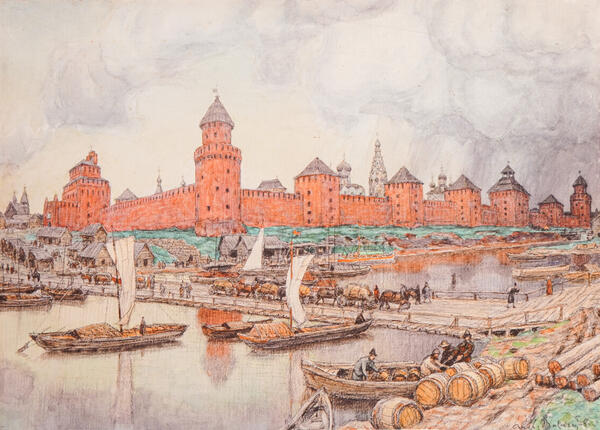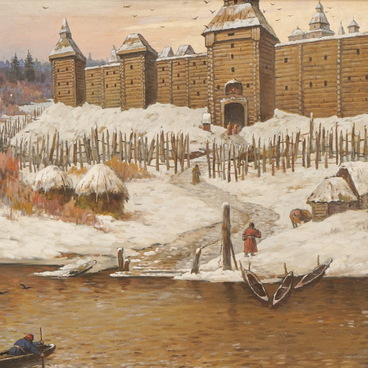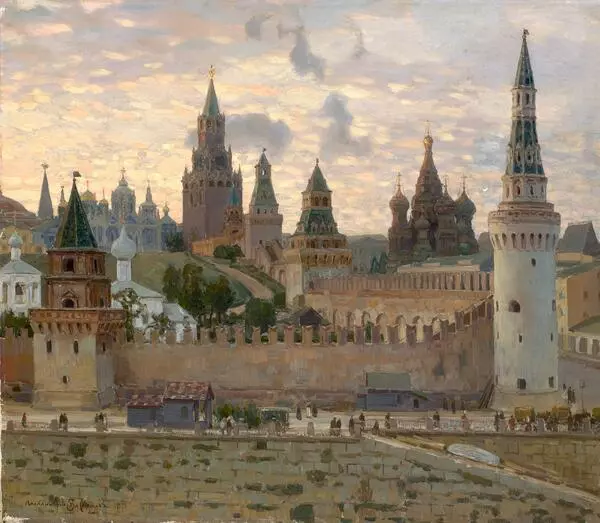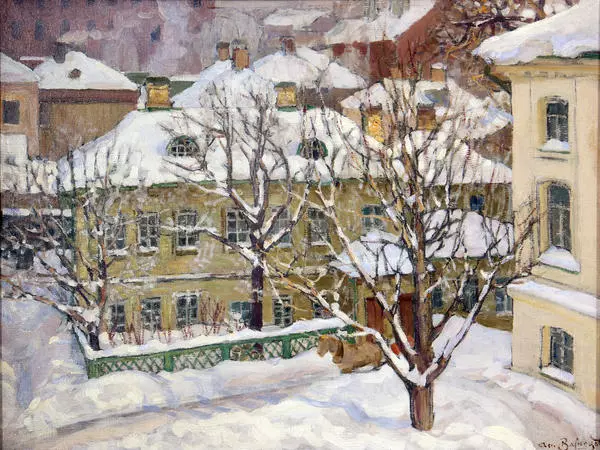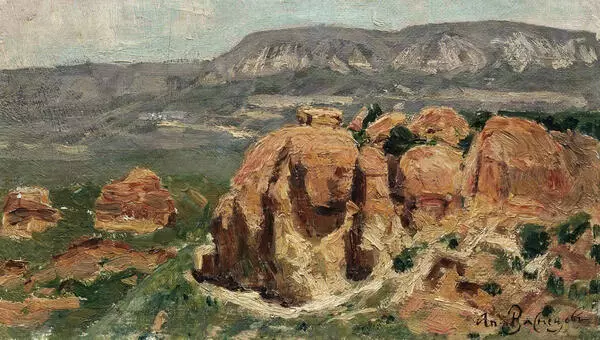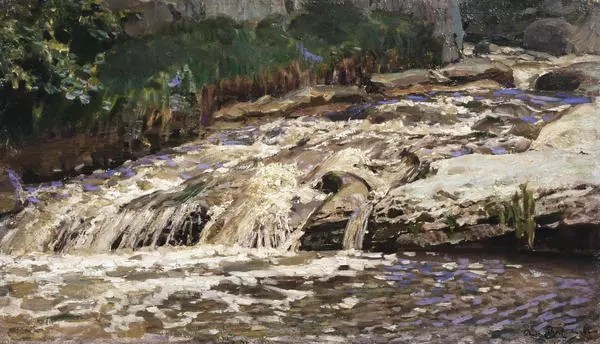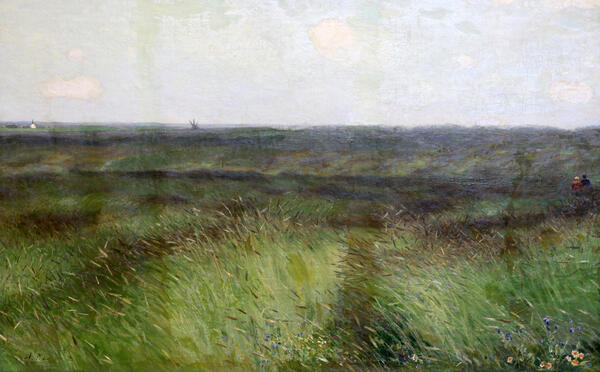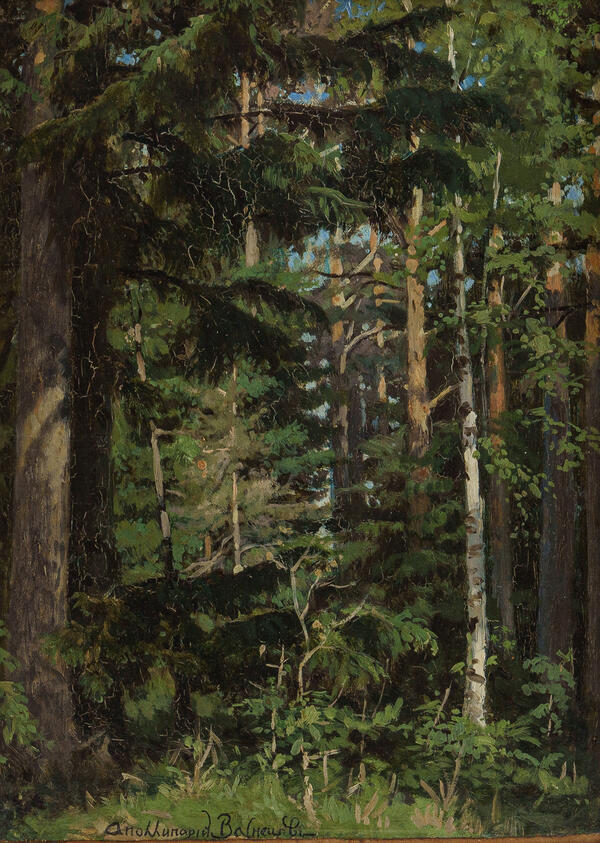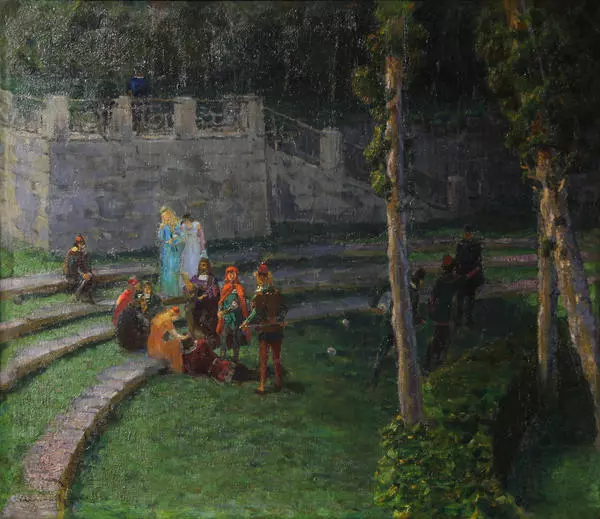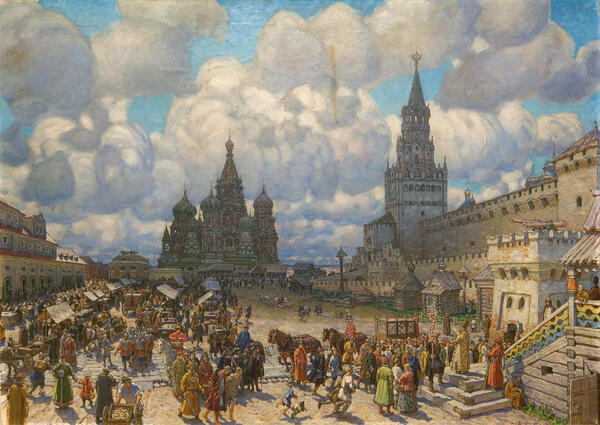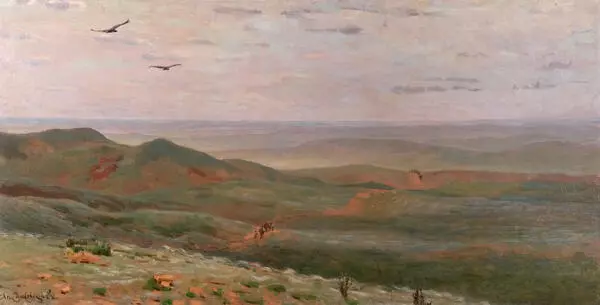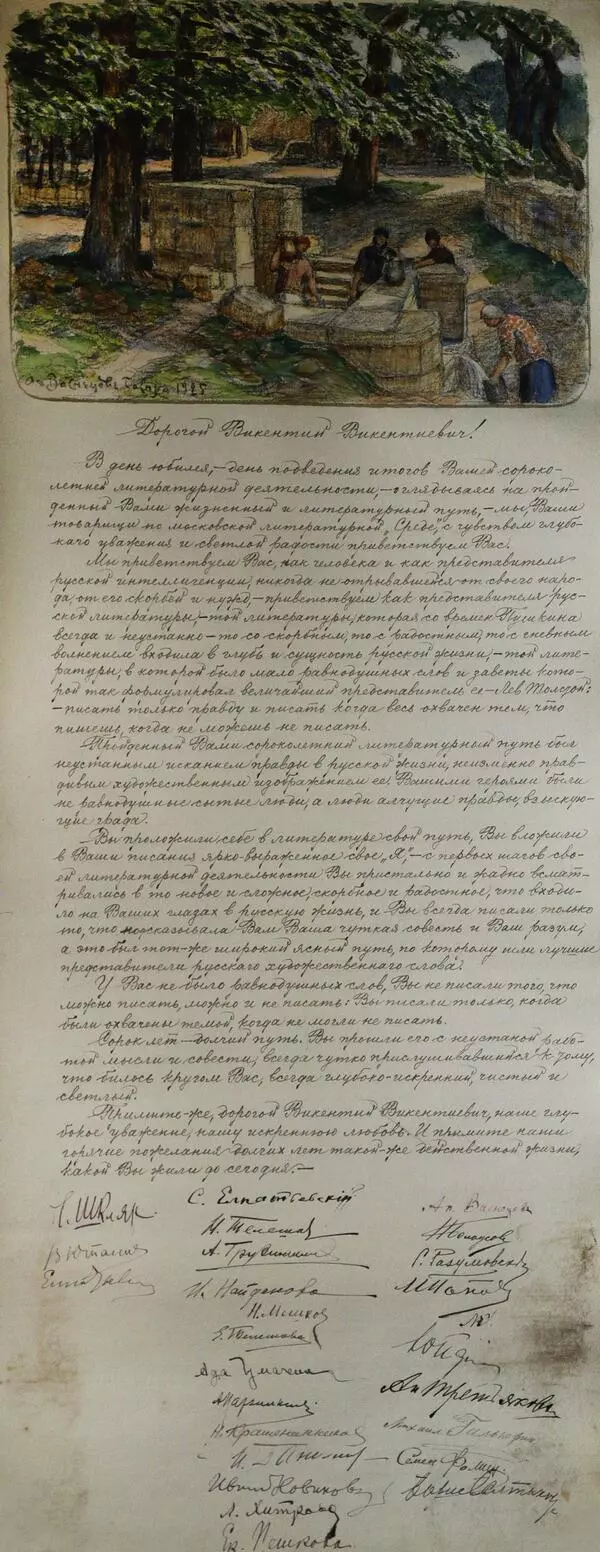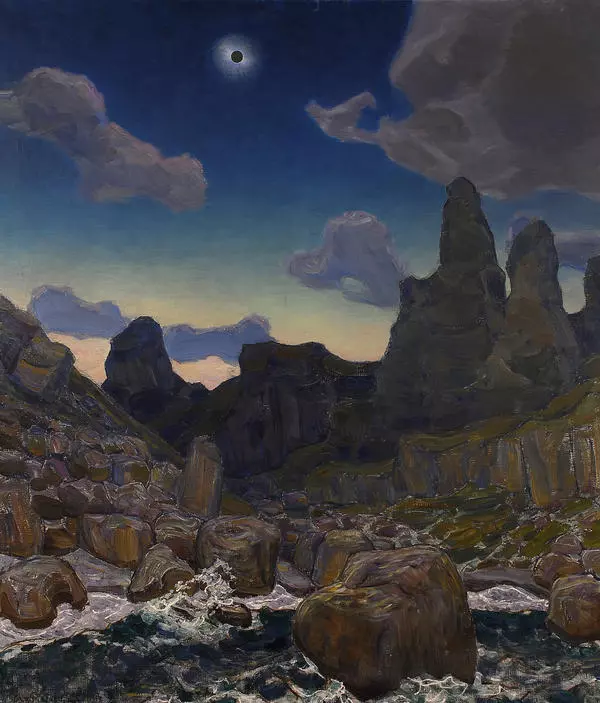Apollinary Vasnetsov (1856-1933) was a Russian artist, a master of historical painting, an art historian and brother of Victor Vasnetsov. The brothers grew up in the family of a priest, a well-educated man; he instilled in Apollinary the love of the natural sciences and astronomy. Apollinary’s teachers were his elder brother’s friends: Ilya Repin, Ivan Kramskoy and Vasily Polenov. His association with the artists of the Abramtsevo Circle was a substitute for attending the Academy of Arts for him. He went down in the history of Russian painting as a master of monumental epic landscape, which glorified the nature of the country. The artist strove to show the beauty of native nature, he tried to convey to the Russian people the idea of the greatness of the Russian land.
The image of the ancient city is the central theme in the work of Apollinary Vasnetsov. He first turned to the monuments of the capital in the late 1870s and since then he created his unique artistic chronicle. From the 1890s to the end of his life he worked on the paintings dedicated to the history of Moscow. Apollinary Vasnetsov regarded the image of the city as one of the strongest embodiments of culture. He said that the history of the city reflects not only that of the region but also of an entire epoch. Vasnetsov was fascinated by the look of the Kremlin and the old streets where he loved to walk. He lived in the vicinity of the Moscow Kremlin in Ostozhenka and his favorite routes were walking around it, where Vasnetsov could admire the walls, towers and cathedrals in order to paint them afterward. One of the artist’s works, “Kolomna Kremlin in the 17th Century”, is dedicated to Kolomna, and there is a digital copy of it in the Regional History Museum.
The Kolomna Kremlin is the central image of the painting. For many decades Kolomna encountered enemies making their way to Moscow and gave them a brave repulse. Given the strategic importance of the city, during the reign of Vasily III, a stone Kremlin was built in Kolomna, which was in no way inferior to the Moscow Kremlin. Gradually, the borders of the Russian state moved further and further away from Kolomna, and it lost its military significance. The people of Kolomna got involved in crafts and trade and the town became one of the 11 largest towns in Russia, with over 700 suburban households. Since the mid-17th century, Kolomna, which was situated on the most important land and water routes, established itself as the “southern gate” to Moscow. The first Russian warship “Oryol” was built in the Kolomna district, at the Dedinovo shipyard. The city became the most important trading center of the Moscow Governorate.
The image of the ancient city is the central theme in the work of Apollinary Vasnetsov. He first turned to the monuments of the capital in the late 1870s and since then he created his unique artistic chronicle. From the 1890s to the end of his life he worked on the paintings dedicated to the history of Moscow. Apollinary Vasnetsov regarded the image of the city as one of the strongest embodiments of culture. He said that the history of the city reflects not only that of the region but also of an entire epoch. Vasnetsov was fascinated by the look of the Kremlin and the old streets where he loved to walk. He lived in the vicinity of the Moscow Kremlin in Ostozhenka and his favorite routes were walking around it, where Vasnetsov could admire the walls, towers and cathedrals in order to paint them afterward. One of the artist’s works, “Kolomna Kremlin in the 17th Century”, is dedicated to Kolomna, and there is a digital copy of it in the Regional History Museum.
The Kolomna Kremlin is the central image of the painting. For many decades Kolomna encountered enemies making their way to Moscow and gave them a brave repulse. Given the strategic importance of the city, during the reign of Vasily III, a stone Kremlin was built in Kolomna, which was in no way inferior to the Moscow Kremlin. Gradually, the borders of the Russian state moved further and further away from Kolomna, and it lost its military significance. The people of Kolomna got involved in crafts and trade and the town became one of the 11 largest towns in Russia, with over 700 suburban households. Since the mid-17th century, Kolomna, which was situated on the most important land and water routes, established itself as the “southern gate” to Moscow. The first Russian warship “Oryol” was built in the Kolomna district, at the Dedinovo shipyard. The city became the most important trading center of the Moscow Governorate.

